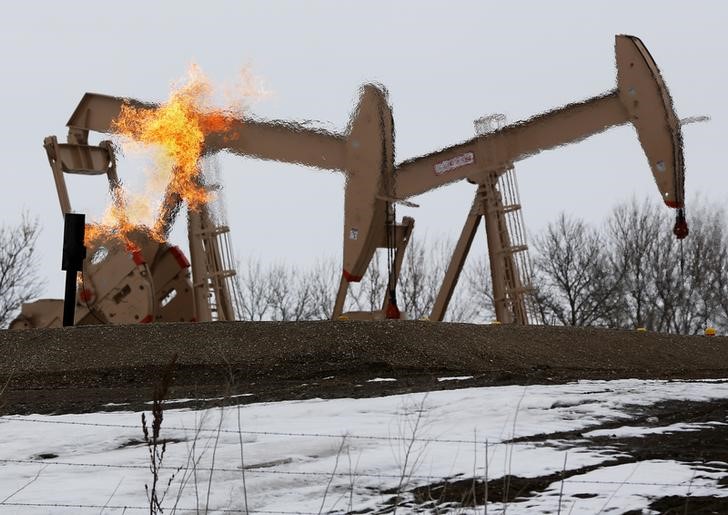 © Reuters.
© Reuters. Investing.com – WTI crude oil prices settled lower Tuesday on fears of an aggressive output hike after Russia’s energy minister suggested the market was capable of absorbing an increase in production.
On the New York Mercantile Exchange for July delivery fell 1.2% to settle at $65.07 a barrel, while on London’s Intercontinental Exchange, fell 1.4% to trade at $64.95 a barrel.
Russia’s Energy minister Alexander Novak suggested Tuesday major oil producers risk a significant shortage in supplies if they decide to keep current production curbs intact as peak summer demand could slash global inventories.
“The third quarter…features the highest demand for oil. So, oil shortages are not ruled out, if measures are not taken,” Novak said, as reported by Prime news agency.
Novak said oil prices are “fairly balance,” and could absorb an output hike – which Russia believes should be in the region of 1.5 million barrels per day (bpd).
Yet, other major oil producers also part of the production-cut accord such as Iran, Iraq and Venezuela do not want to lift output curbs, claiming that oil prices still need to be supported.
OPEC and its allies’ 1.8 million bpd production-cut agreement agreed in November 2016 has rid the market of excess crude supplies. The OPEC-led deal is expected to come under review at the oil-cartels meeting later this week.
Fears of an aggressive output hike from OPEC and its allies come at a time when the U.S. continues to ramp up production, as domestic shale producers take advantage of higher oil prices.
Crude oil prices were also weighed down by a sharp move higher in the amid escalating trade tensions between the U.S. and China, reducing appetite for risk assets as traders sought safe-havens.
Fusion Media or anyone involved with Fusion Media will not accept any liability for loss or damage as a result of reliance on the information including data, quotes, charts and buy/sell signals contained within this website. Please be fully informed regarding the risks and costs associated with trading the financial markets, it is one of the riskiest investment forms possible.
Source: Investing.com




























